Winged Wonders
Discovering the birds of Malhar
In our fast-paced lives, how often do we appreciate the gentle harmonies of nature that surrounds us? Melodious chirping of birds greeting the dawn, their dazzling displays of colour, and the myriad variety of these avian wonders often become fleeting moments of beauty, quickly replaced by the next pressing thought or task on the to-do list.
Nature, in all its diverse glory – from birds in the sky, trees anchoring the earth, to tiny insects that work tirelessly – bestows upon us countless gifts. Yet, more often than not, these treasures are relegated to the background amidst the din of our routine lives.
Envisioned with deep reverence for nature, the Malhar Eco-village stands as a beacon of harmonious living. It has been meticulously designed and developed to ensure that we coexist seamlessly with the wonders of nature. As Malhar’s rich tapestry of flora and fauna thrives, it becomes imperative for us to not only appreciate these invaluable inhabitants but also understand their roles in our ecosystem. By doing so, we can impart invaluable lessons to our children: the importance of respecting, caring for, and nurturing every aspect of nature.
Birds of Malhar
Birds, often heralded as indicators of a healthy ecosystem, play a pivotal role in the ecology. They assist in pollination, seed dispersal, insect control, and maintaining a balance within the food chain. In this carefully designed ecosystem, the presence of birds is not just a pleasing sight but a fundamental building block of a thriving environment.
The significance of having birds within the neighbourhood cannot be overstated. As symbols of biodiversity, their presence signifies the health of an environment and its ability to support various life forms. They serve as ambassadors of nature’s delicate balance, bridging the gap between the built environment and the wilderness that surrounds it.
Amidst the lush landscapes of Malhar, every tree, shrub, and waterbody hold stories of interdependence and harmony, serving as gentle reminders for us to look closer, listen, and understand. Thus, through this series, we introduce you to some of the remarkable avian residents that have found their home within the eco-village.
Let’s embark on this exploration together, recognising and celebrating the many ways in which these birds enrich our lives.
The Baya Weaver
Nature’s most ingenious architects
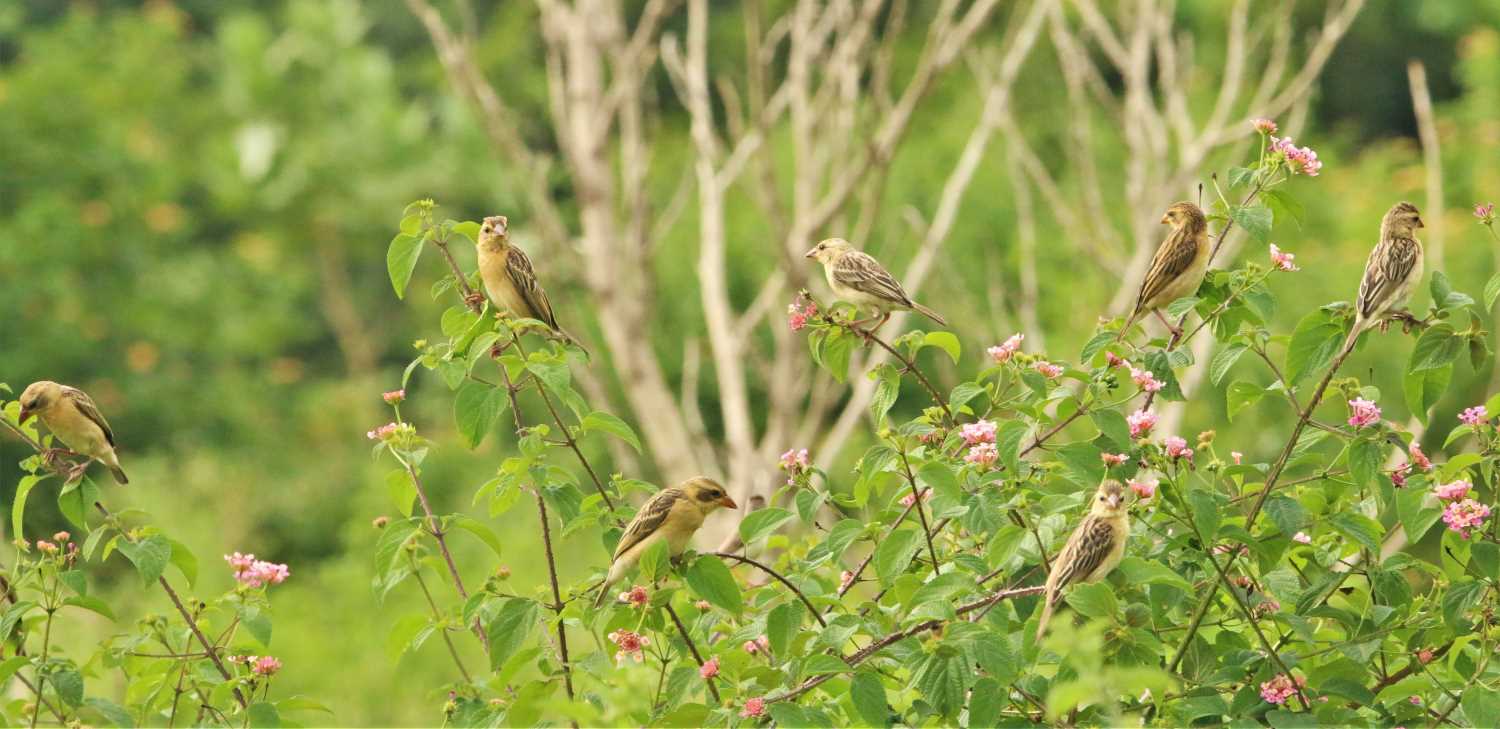
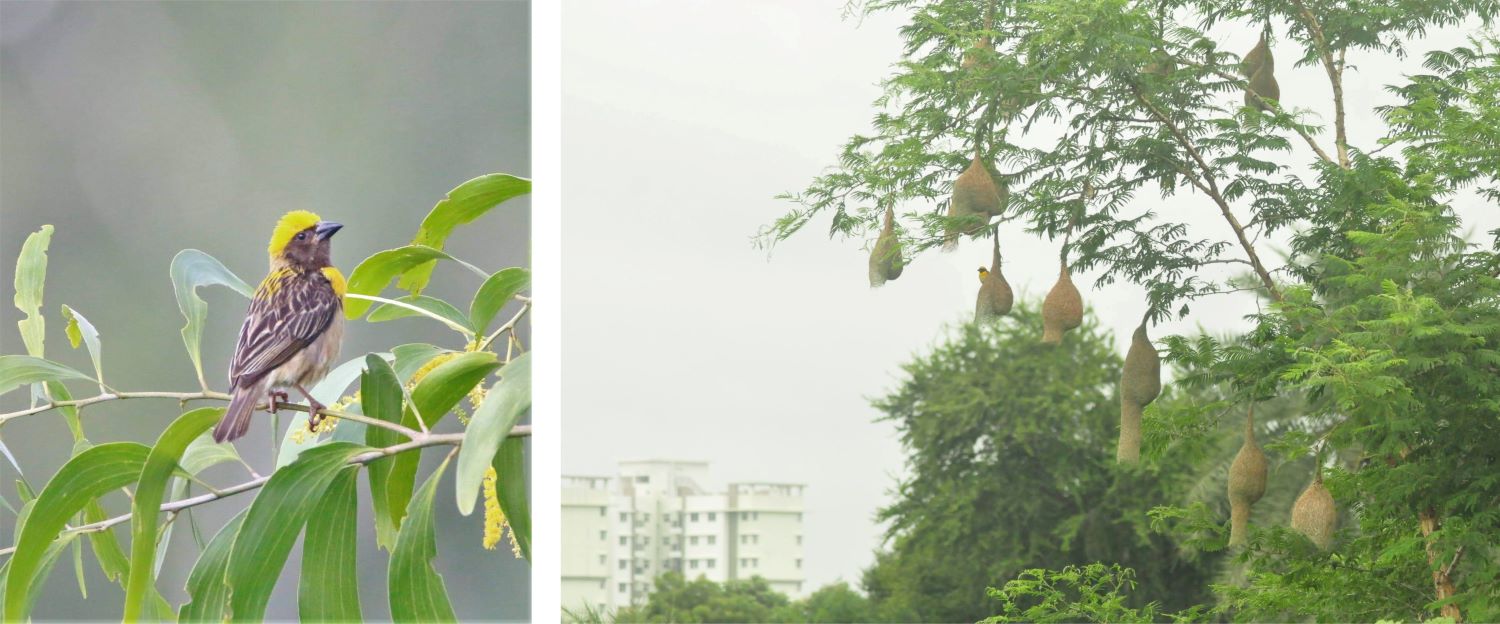
Photographs: Manmath Acharjya & Bidisha Ganguly, Residents of Malhar.
The Baya Weaver, native to South and Southeast Asia, is a petite bird roughly the size of a sparrow. During the non-breeding season, male Baya Weavers closely resemble their female counterparts, exhibiting subtle, muted colours. However, between April and August, the males undergo a striking transformation, adopting a vibrant yellow plumage that becomes their defining feature. Distinguished by these vibrant yellow crowns, male Baya Weavers emerge not only as vivid visual delights but also as renowned architects of the avian world.
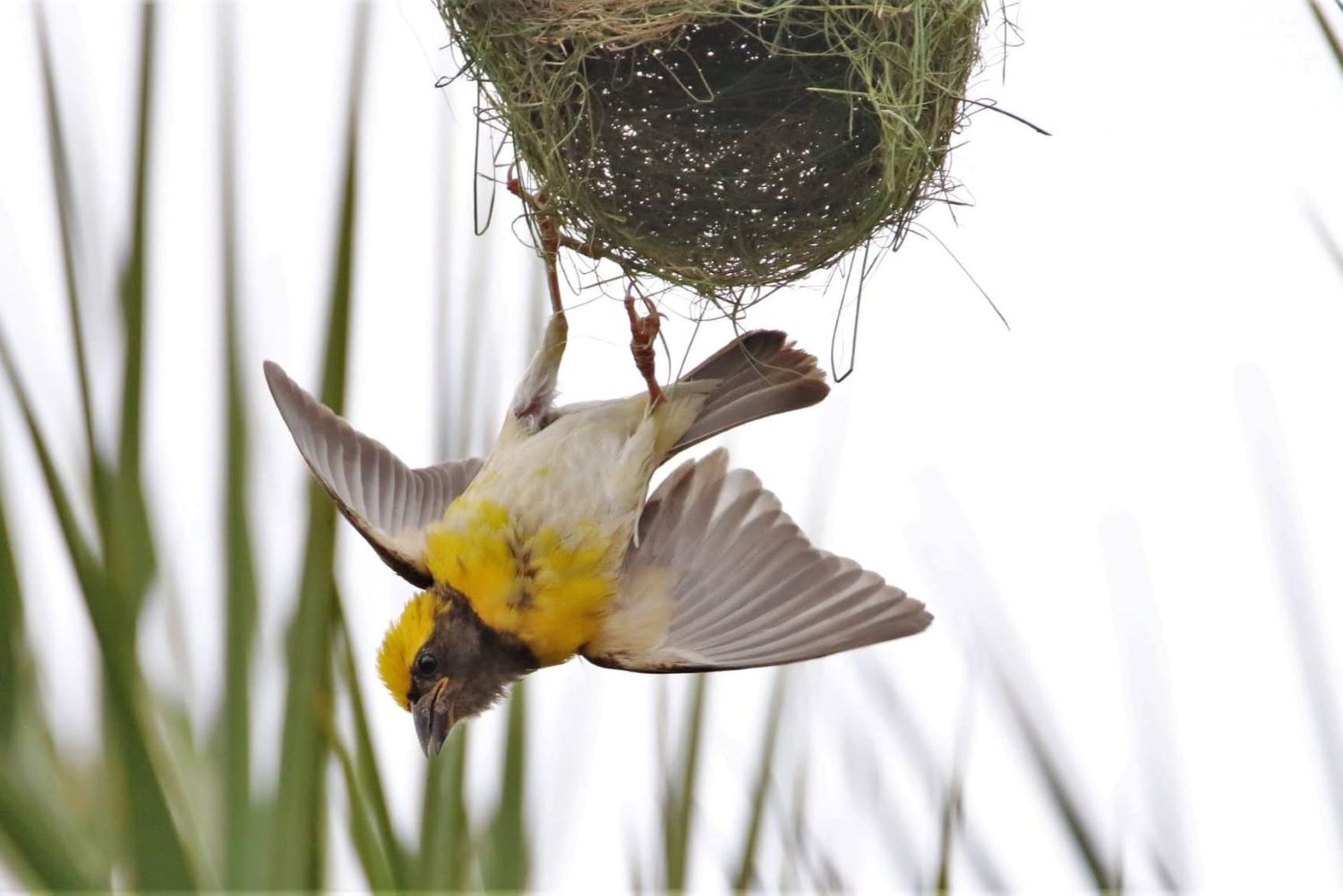
Their intricate nests, masterfully woven from long grass and leaves, often hang over water, offering protection from predators. Interestingly, it’s the male that embarks on the initial phase of nest construction. Once a portion is complete, he invites potential mates for an inspection. Should the female approve, she collaborates in finishing the nest. However, if she’s unimpressed, he starts anew. This intriguing ritual often results in multiple nests – some unfinished – adorning trees around Malhar. These unfinished nests represent not just the artistry of the male weavers but also the stages of skill development and strategic decoys against threats.
The Baya Weaver
Nature’s most ingenious architects


Photographs: Manmath Acharjya & Bidisha Ganguly, Residents of Malhar.
The Baya Weaver, native to South and Southeast Asia, is a petite bird roughly the size of a sparrow. During the non-breeding season, male Baya Weavers closely resemble their female counterparts, exhibiting subtle, muted colours. However, between April and August, the males undergo a striking transformation, adopting a vibrant yellow plumage that becomes their defining feature. Distinguished by these vibrant yellow crowns, male Baya Weavers emerge not only as vivid visual delights but also as renowned architects of the avian world.

Their intricate nests, masterfully woven from long grass and leaves, often hang over water, offering protection from predators. Interestingly, it’s the male that embarks on the initial phase of nest construction. Once a portion is complete, he invites potential mates for an inspection. Should the female approve, she collaborates in finishing the nest. However, if she’s unimpressed, he starts anew. This intriguing ritual often results in multiple nests – some unfinished – adorning trees around Malhar. These unfinished nests represent not just the artistry of the male weavers but also the stages of skill development and strategic decoys against threats.
Ecological importance
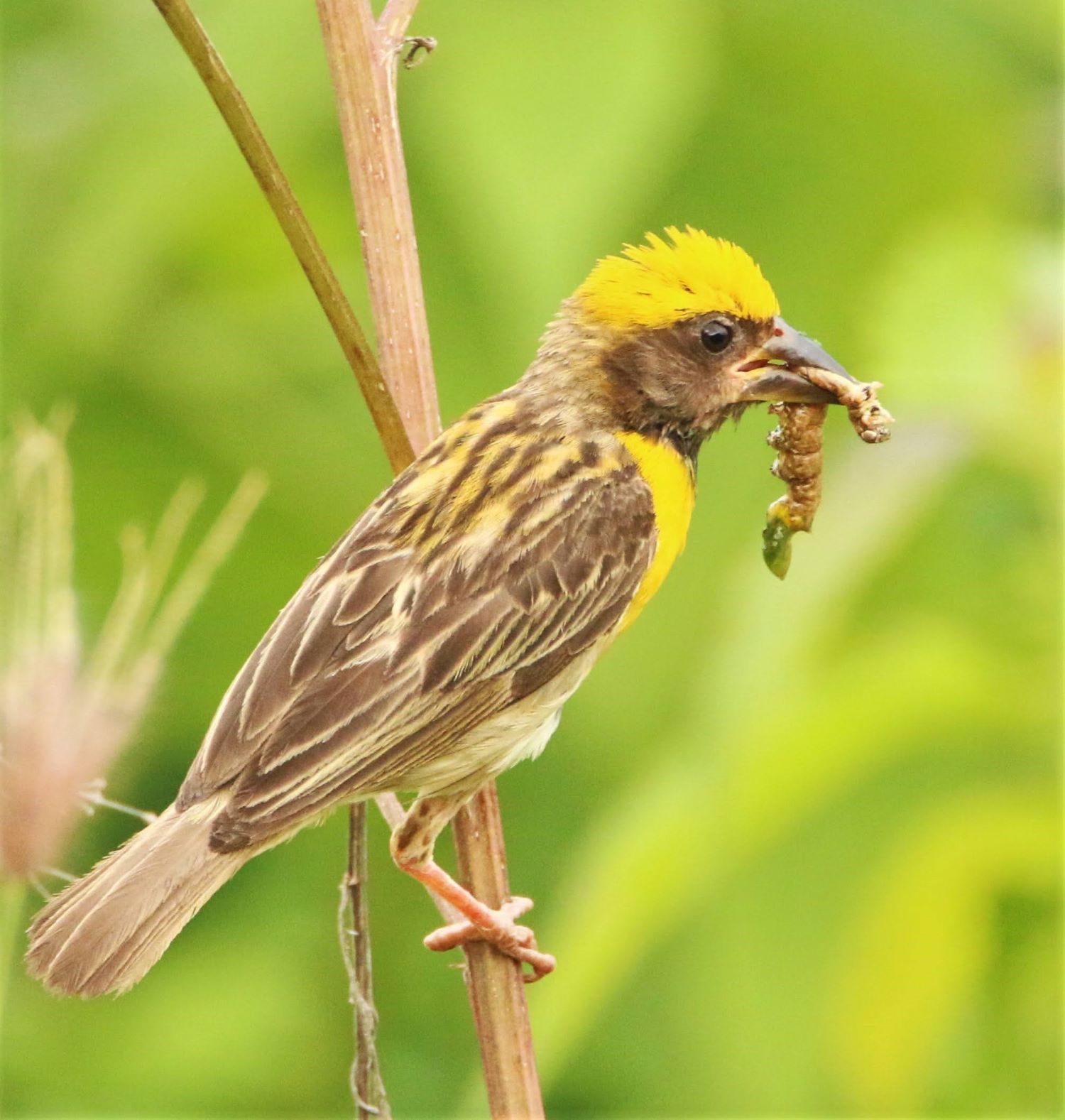
- Pest Control: While their diet predominantly consists of seeds and grains, these avian residents of Malhar also consume various insects, acting as natural pest controllers.
- Seed Dispersal: The grain-heavy diet of Baya Weavers contributes to subtle seed dispersal. Undigested seeds find new ground, nurturing a diverse array of plant species throughout your community.
- Ecosystem Health: The presence of Baya Weavers can be viewed as an indicator of a thriving ecosystem. Their breeding preferences signal a well-balanced natural environment.
- Food Chain Support: As part of the food chain, Baya Weavers, their eggs, and fledglings serve as essential prey for various predators such as raptors, snakes, and mammals, contributing to the vitality of the local food web.
- Plant Growth Enhancement: Nesting in trees and shrubs, Baya Weaver nests enrich the soil below. As organic materials from the nests decompose, they nourish the plants enhancing their growth.
Conservation
While the Baya Weaver continues to grace Malhar with its presence, it is essential to be mindful of the challenges they face. Rapid urbanisation and habitat loss in certain areas can potentially impact their populations. In fact, all Indian weaver bird species are protected and listed in Schedule IV of the Wildlife (Protection) Act, 1972. Thus, simple initiatives, such as supporting the preservation of local wetlands, refraining from disturbing their nests, and spreading awareness about their significance, can have a profound impact.
So, as you embark on your leisurely walks through Malhar, keep an eye out for the Baya Weaver and its intricately woven nests. These small yet significant residents of your neighbourhood offer a glimpse into the wonders of nature’s design and the delicate harmony that surrounds you.
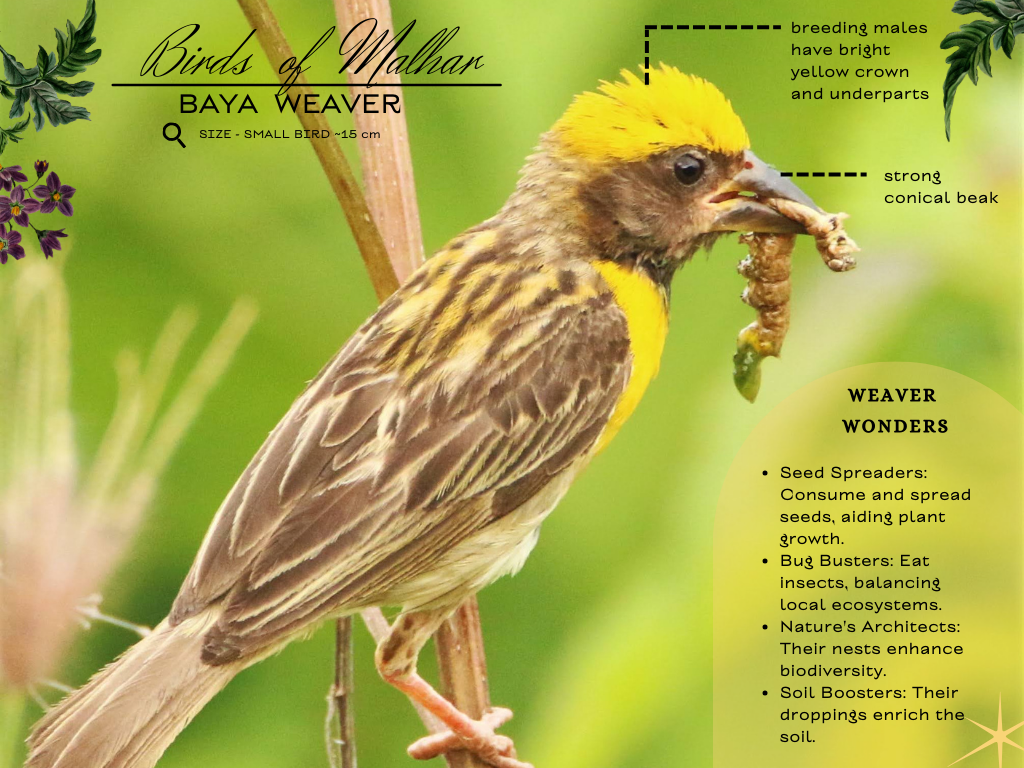
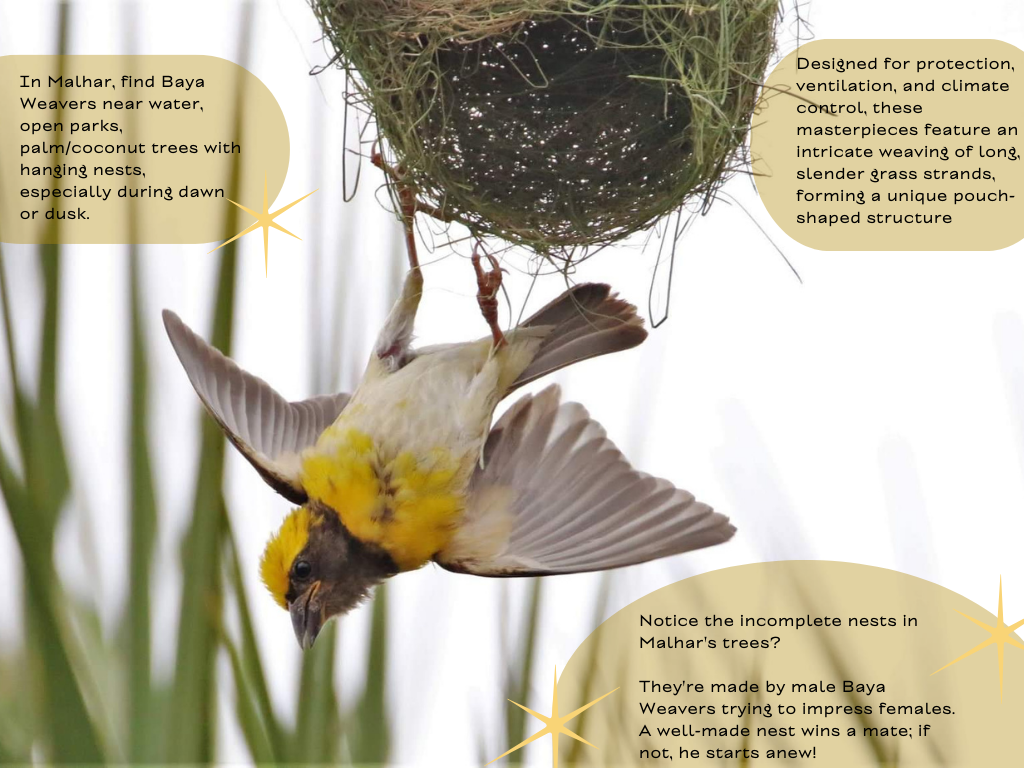
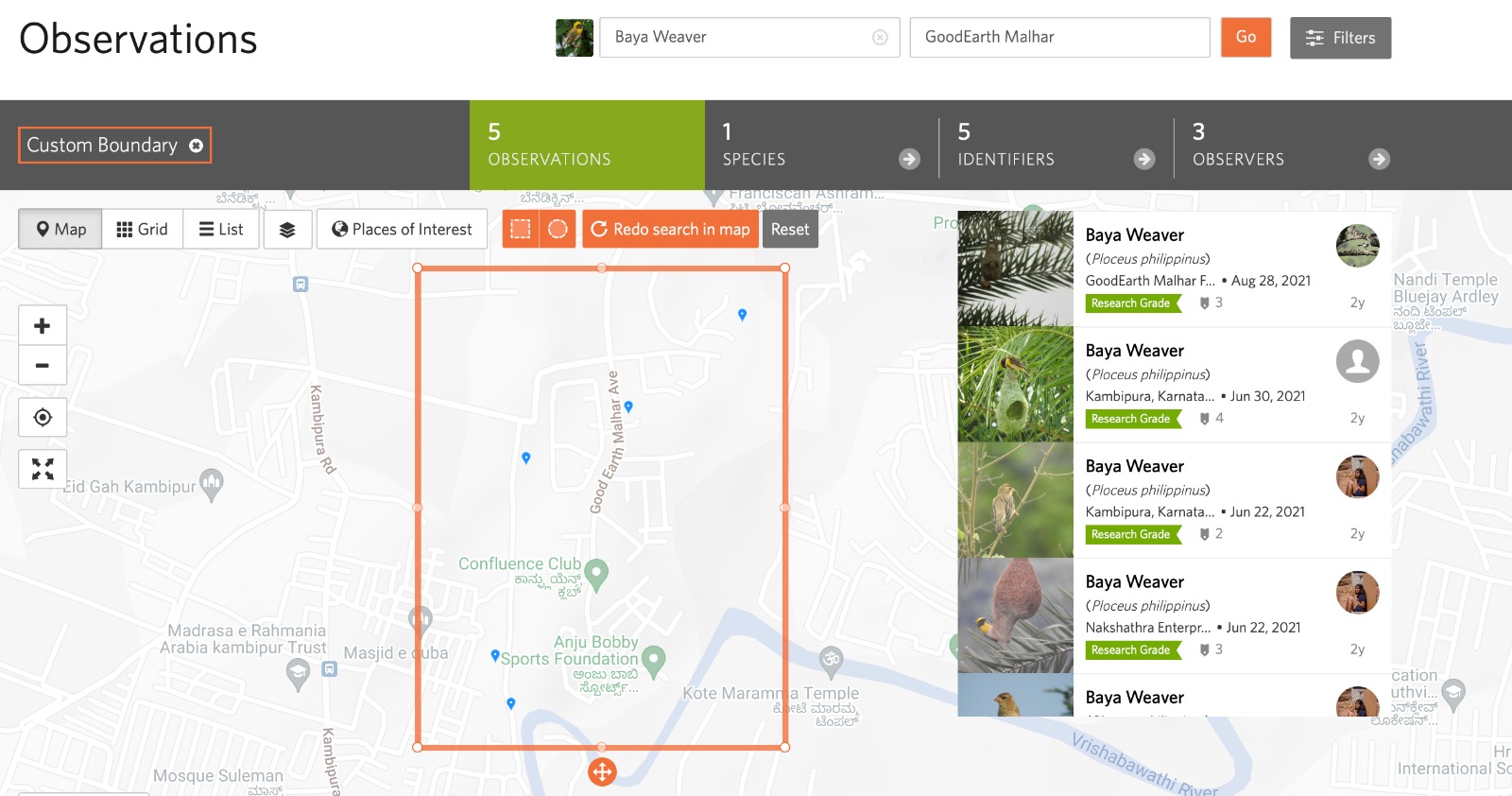

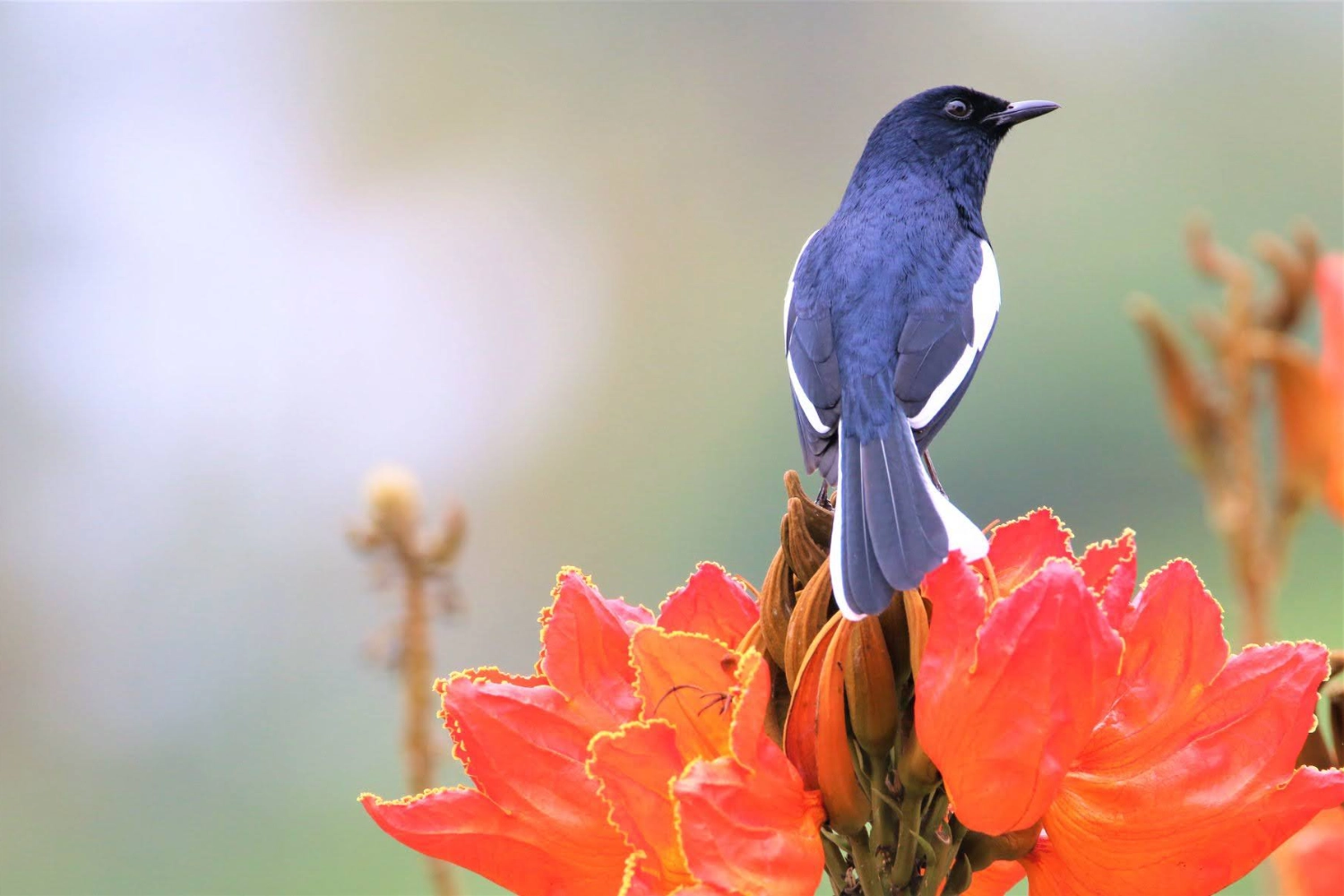
Leave A Comment